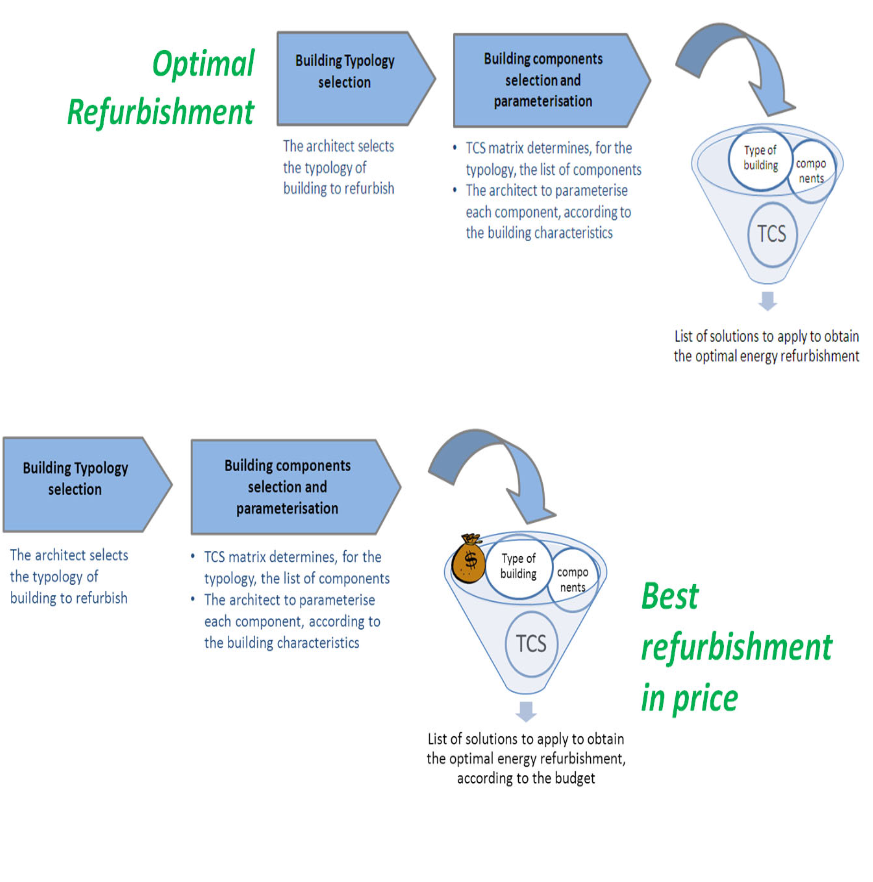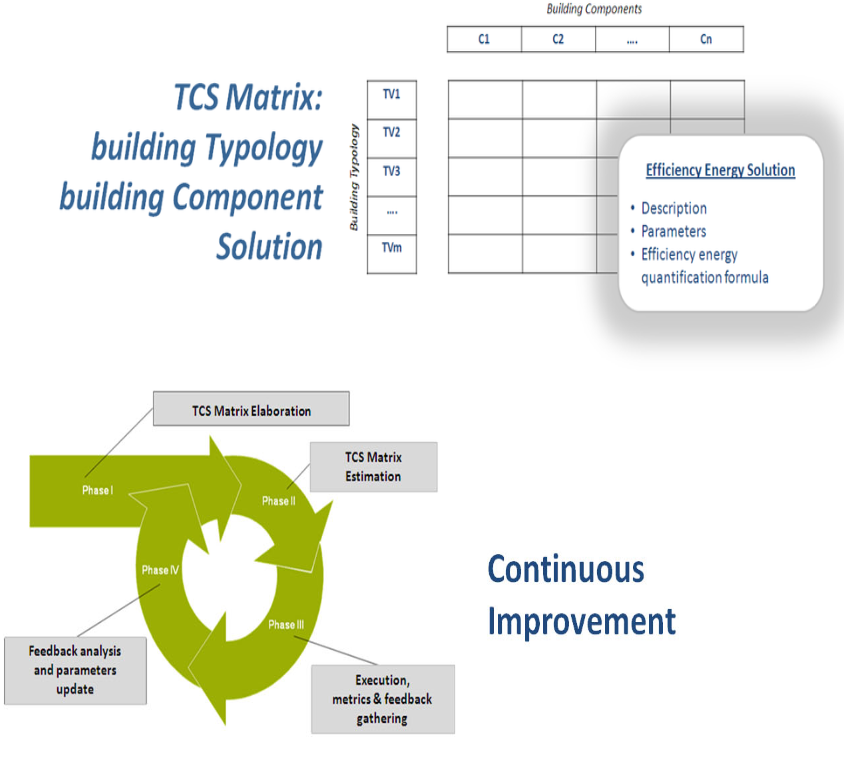Aránzazu Galán González
Lecturer, aranzazu.galan.gonzalez@ulb.be
Collaboration: Philippe Bouillard (ULB), Consolación Ana Acha Román (Universidad Politécnica de Madrid, Spain)
Keywords: Building Stock, Building Energy Retrofit, Energy Integration Strategies, Renovation, Renewable Energy, Residential Stock, Energy Efficiency, Integration Strategies, Retrofitting, Heritage
There is an individual and often fragmental approach to the energy renovation projects even when the solutions are applied in an individual residential building, without a previous analyse of all the solutions seen as a whole to identify synergies and/or incompatibilities between the different techniques applied that results in lack of efficiency and unsuccessful solutions. This individual approach results, because the lacks of a whole vision of the project, in a raise of the final budget and, in most of the cases, without achieving the expected energy efficiency improvements. This research investigates energy integration strategies for the retrofitting of historical building stock in the east extension in Brussels. It focuses on developing a pre-assessment methodology for the retrofitting of this historical building stock to support decision making and enable the development of an integration strategy for different cases and specifications. It involves the evaluation of the building stock characteristics and its urban structure context under a holistic approach so to be able to assess the synergies and/or incompatibilities between the different techniques applied. The target is the development of a tool that identifies in an early stage the benefits or impacts of different actions and the solutions that better fits, achieving an energy efficiency improvement from a technical, legal and economic point of view. Depending of the integration objectives required in each case, various solutions can be find. The aim is not to provide an optimal solution but to help to make the right choices without compromising the interests of the technical staff, client or user. To do this, the possible performances are organized in the form of an matrix (TCS: building Typology, building Component, Solution). This matrix is basically a compendium of the integration of renewable energy techniques to apply in rehabilitation projects, sorted by building typology and its major components, so that it gives an overview of the integrated strategy of the rehabilitation process. The measures provided are based on proven experiences of best practices.

TCS Matrix is the cornerstone of this project, and the basic tool that allows drawing all the added value from the Integration of renewable energy technologies. As it is key to accurately calibrate the TCS matrix, the methodology relies on the calibration process. First, by performing benchmaks to identify reliable metrics. Second, by making an initial assessment of the techniques using the Renewable Energy House in Brussels as a case study. Finally, by implementing a feedback mechanism to compare the results obtained from the tool with the real energy efficiency achieved. The feedback mechanism is use to recalibrate the TCS to get more reliable and accurate results.

The research is conducted as a joint-PhD between the Université Libre de Bruxelles and the Universidad Politécnica de Madrid.
This research is funded by: INNOViris Strategic Platform of Environment: Brussels XL Retrofit (B3 RetroTool project)
Selected Publications
[1] Galán González, A. and Bouillard, P., Acha Román, C., Stevanovic, M (2013). Pre-assessment tool for the evaluation of optimal renewable energy integration strategies. Case study in the extension east of Brussels. In CISBAT 2013. Clean Technology for Smart Cities and Buildings. From Nano to Urban scale. CISBAT, Lausanne.
[2] Galán González, A. and Bouillard, P., Acha Román, C., Stevanovic, M (2013). KEEPING THE HISTORICAL HERITAGE ALIVE: Methodology for the energy renovation of the historic residential stock of the east extension in Brussels. Proceedings of international Conference PLEA 2013, 10-12 September 2013 Munich.
Key References
[1] Power: Does demolition or refurbishment of old and inefficient homes help to increase our environmental, social and economic viability? Energy Policy 2008. 36(12): 4487-4501.
[2] Eurostat, Europe in figures, Eurostat yearbook 2009. Luxembourg: Office for Official Publications of the European Communities; 2009.
[3] A.F. Thomsen y C.L. van der Flier: Replacement or reuse? The choice between demolition and life cycle extension from a sustainable viewpoint, in Shrinking Cities, Sprawling Suburbs, Changing Countrysides 2008; Centre for Housing Research, UCD.
[4] M.R. Gaterrel y M.E. McEvoy: The impact of climate change uncertainties on the performance of energy efficiency measures applied to dwellings. Energy and Buildings 2005. 37(9): 982-995
[5] L. Itard y F. Meijer: Towards a sustainable Northern European housing stock. Sustainable urban areas 2008; 22:213.Amsterdam: IOS.
[6] A. Thomsen: Paradigm shift or choke? The future of the Western European housing stock, in Housing: the next 20 years -CCHPR Conference 2010, Cambridge.
[7] T. Konstantinou, U. Knaack: Refurbishment of residential buildings: a design approach to energy-efficiency upgrades. 2011 International Conference on Green Buildings and Sustainable Cities. Procedia Engineering 21 (2011) 666-675.
[8] J. Rodríguez Álvarez: Rehabilitación energetic del tejido urbano residencial. Evaluación previa para una mayor eficiencia. SB10mad Sustainable building conference. Madrid 2010.
[9] A.F. Thomsen y C.L. van der Flier: Replacement or reuse? The choice between demolition and life cycle extension from a sustainable viewpoint, in Shrinking Cities, Sprawling Suburbs, Changing Countrysides 2008; Centre for Housing Research, UCD.
[10] L. Itard y F. Meijer: Towards a sustainable Northern European housing stock. Sustainable urban areas 2008; 22:213.Amsterdam: IOS.
[11] M. Economidou: Europe’s buildings under the Microscope: A country-by-country review of the energy performance of buildings. October 2011. Buildings Performance Institute Europe (BPIE)